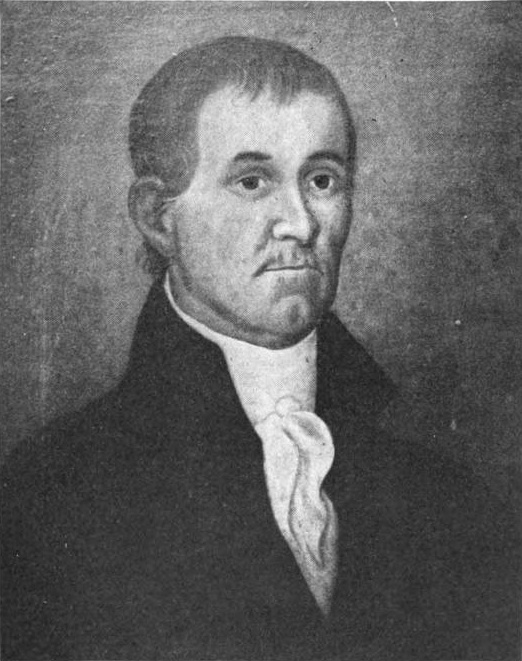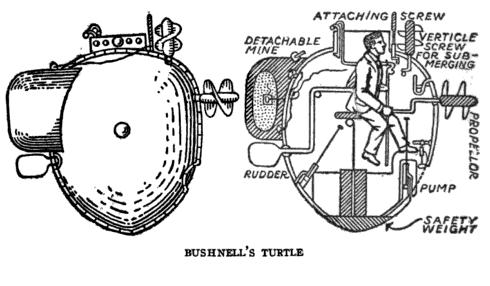Ezra Lee on:
[Wikipedia]
[Google]
[Amazon]

 Ezra Lee (August 1749 – October 29, 1821) was an American colonial soldier, best known for commanding and operating the one-man ''
Ezra Lee (August 1749 – October 29, 1821) was an American colonial soldier, best known for commanding and operating the one-man ''

 Ezra Lee (August 1749 – October 29, 1821) was an American colonial soldier, best known for commanding and operating the one-man ''
Ezra Lee (August 1749 – October 29, 1821) was an American colonial soldier, best known for commanding and operating the one-man ''Turtle
Turtles are an order of reptiles known as Testudines, characterized by a special shell developed mainly from their ribs. Modern turtles are divided into two major groups, the Pleurodira (side necked turtles) and Cryptodira (hidden necked t ...
'' submarine.
Early life and career
Lee was born inLyme, Connecticut
Lyme is a town in New London County, Connecticut, United States, situated on the eastern side of the Connecticut River. The population was 2,352 at the 2020 census. Lyme is the eponym of Lyme disease.
History
In February 1665, the portion of th ...
. On January 1, 1776, he enlisted in the 10th Continental Regiment, which was raised in Connecticut, as a sergeant.
In August 1776 he was selected by brother-in-law Brigadier General Samuel Holden Parsons
Samuel Holden Parsons (May 14, 1737 – November 17, 1789) was an American lawyer, jurist, generalHeitman, ''Officers of the Continental Army'', 428. in the Continental Army during the American Revolutionary War, and a pioneer to the Ohio Countr ...
, also of Lyme, as one of several volunteers to learn to operate the ''Turtle'', an early submarine invented by Saybrook, Connecticut
Deep River is a town in Middlesex County, Connecticut. The population was 4,415 at the 2020 census. The town center is designated by the U.S. Census Bureau as a census-designated place (CDP). Deep River is part of what the locals call the "Tri- ...
, native David Bushnell
David Bushnell (August 30, 1740 – 1824 or 1826), of Westbrook, Connecticut, was an American inventor, a patriot, one of the first American combat engineers, a teacher, and a medical doctor.
Bushnell invented the first submarine to be used in ...
. When General George Washington
George Washington (February 22, 1732, 1799) was an American military officer, statesman, and Founding Father who served as the first president of the United States from 1789 to 1797. Appointed by the Continental Congress as commander of ...
authorized an attack on British Admiral Richard Howe
Admiral of the Fleet Richard Howe, 1st Earl Howe, (8 March 1726 – 5 August 1799) was a British naval officer. After serving throughout the War of the Austrian Succession, he gained a reputation for his role in amphibious operations a ...
's flagship , then lying in New York harbor, Lee was chosen to operate the "infernal machine".
Governors Island attack
Sergeant Lee piloted the ''Turtle'' up to the ''Eagle'', which was moored off what is today calledGovernors Island
Governors Island is a island in New York Harbor, within the New York City borough of Manhattan. It is located approximately south of Manhattan Island, and is separated from Brooklyn to the east by the Buttermilk Channel. The National Park ...
, due south of Manhattan
Manhattan (), known regionally as the City, is the most densely populated and geographically smallest of the five boroughs of New York City. The borough is also coextensive with New York County, one of the original counties of the U.S. state ...
. A common misconception was that Lee failed because he could not manage to bore through the copper-sheeted hull. In practice, it has been shown that the thin copper would not have presented any problem to the drill, and that he likely struck a metal rudder support.
A more likely scenario is that Lee's unfamiliarity with the vessel made him unable to keep the ''Turtle'' stable enough to work the drill against the ''Eagle'' hull. When he attempted another spot in the hull, he was unable to stay beneath the ship, and eventually abandoned the attempt. Governors Island is off the southern vertex of Manhattan, this is the place where the Hudson River
The Hudson River is a river that flows from north to south primarily through eastern New York. It originates in the Adirondack Mountains of Upstate New York and flows southward through the Hudson Valley to the New York Harbor between N ...
and the East River
The East River is a saltwater tidal estuary in New York City. The waterway, which is actually not a river despite its name, connects Upper New York Bay on its south end to Long Island Sound on its north end. It separates the borough of Quee ...
merge. The currents at this point would be strong and complex. The ''Turtle'' would only be able to attack ship moored here during the short period of time when the incoming tide balanced the river currents. It is possible that during the attack the tide turned and Lee was unable to compensate. He released the keg of gunpowder when British in row boats attempted to pursue him. The British, suspecting some trick, gave up their pursuit.
Lee landed safely after remaining several hours in the water, and received the congratulations of Washington, who afterwards employed him on secret service
A secret service is a government agency, intelligence agency, or the activities of a government agency, concerned with the gathering of intelligence data. The tasks and powers of a secret service can vary greatly from one country to another. For ...
. Lee made an attempt a short time afterward with ''Turtle'' to destroy a British frigate that lay opposite the village of Bloomingdale, but was discovered and compelled to abandon the enterprise. The submarine was soon afterward sunk by the British as it sat on its tender vessel, in Fort Lee, New Jersey
Fort Lee is a borough at the eastern border of Bergen County, in the U.S. state of New Jersey, situated along the Hudson River atop the Palisades.
As of the 2020 U.S. census, the borough's population was 40,191. As of the 2010 U.S. census, t ...
. Years later in a letter to Thomas Jefferson
Thomas Jefferson (April 13, 1743 – July 4, 1826) was an American statesman, diplomat, lawyer, architect, philosopher, and Founding Father who served as the third president of the United States from 1801 to 1809. He was previously the natio ...
, Bushnell reported he had salvaged the ''Turtle''; its final fate is unknown.
After these events, Lee was congratulated by Washington and General Israel Putnam
Israel Putnam (January 7, 1718 – May 29, 1790), popularly known as "Old Put", was an American military officer and landowner who fought with distinction at the Battle of Bunker Hill during the American Revolutionary War (1775–1783). He als ...
and moved into the secret service/special forces. Lee's headstone says "He was a Revolutionary Officer, and esteemed by Washington."
Later action
Lee was commissioned as an ensign in the Continental Army on October 11, 1776. Following a reorganization of the army, Lee was transferred to the1st Connecticut Regiment
The 1st Connecticut Regiment was a unit of the Continental Army, and was involved in the American Revolutionary War. The regiment was initially formed in 1776, and was active in various forms until 1783.
1776–1780
The 1st Connecticut Regiment ...
on January 1, 1777, was promoted to 2nd lieutenant on January 1, 1778, and to 1st lieutenant on June 5, 1778. He was appointed as regimental quartermaster on November 16, 1778, and transferred to the 5th Connecticut on January 1, 1781. He was appointed as paymaster in June 1781.
During the Revolution, Lee participated in the battles of Trenton, Brandywine Brandywine may refer to:
Food and drink
*Brandy, a spirit produced by distilling wine
*Brandywine tomato, a variety of heirloom tomato
Geographic locations Canada
* Brandywine Falls Provincial Park, British Columbia
* Brandywine Mountain, British ...
, and Monmouth. He had his sword handle shot off and received many bullet holes in his coat at Brandywine. He was discharged from the army in June 1782.
Lee is buried in the Duck River Cemetery
The Duck River Cemetery, also known as the Old Lyme Cemetery is the communal burying ground of the town of Old Lyme, Connecticut. Slater, James A. The Colonial Burying Grounds of Eastern Connecticut
and the Men Who Made Them. Memoirs of the Conne ...
in modern-day Old Lyme
Old Lyme is a coastal town in New London County, Connecticut, United States. The main street of the town, Lyme Street, is a historic district with several homes once owned by sea captains. Lyme Academy of Fine Arts is located in Old Lyme and the ...
, Connecticut. His 1821 obituary mentioned that, "This soldier is the only man who fought the enemy upon land, upon water, and under the water,"
References
* '' Appletons Encyclopedia'' * George J. Willauer Jr, ed. ''A Lyme Miscellany 1776–1976'' (Wesleyan University Press) 1976 {{DEFAULTSORT:Lee, Ezra 1749 births 1821 deaths People of Connecticut in the American Revolution Continental Army soldiers People from Lyme, Connecticut Burials in Connecticut People of colonial Connecticut Continental Army officers from Connecticut Submariners